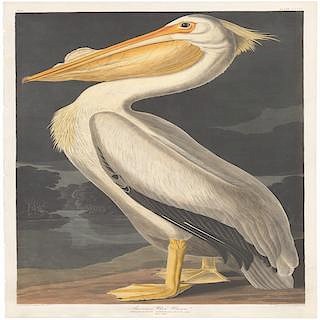Ptolemy & Cernoti, Geografia, 1597, Rare Book
Lot 135
About Seller
Arader Galleries
1308 Walnut Street
King of Prussia, PA 19406
United States
Arader Galleries proudly celebrates over 40 years in the business of important, antique works on paper, paintings and rare books. W. Graham Arader III began his collection of rare maps, atlases and Americana while an undergraduate at Yale University, and today that passion has grown into one of the ...Read more
Estimate:
$4,000 - $6,000
Absentee vs Live bid
Two ways to bid:
- Leave a max absentee bid and the platform will bid on your behalf up to your maximum bid during the live auction.
- Bid live during the auction and your bids will be submitted real-time to the auctioneer.
Bid Increments
| Price | Bid Increment |
|---|---|
| $0 | $25 |
| $500 | $50 |
| $1,000 | $100 |
| $2,000 | $250 |
| $5,000 | $500 |
| $10,000 | $1,000 |
| $20,000 | $2,000 |
| $50,000 | $5,000 |
| $100,000 | $10,000 |
| $200,000 | $25,000 |
About Auction
By Arader Galleries
Mar 25, 2017 - Mar 26, 2017
Set Reminder
2017-03-25 13:00:00
2017-03-26 13:00:00
America/New_York
Bidsquare
Bidsquare : Arader Galleries Spring 2017 Auction
https://www.bidsquare.com/auctions/arader/arader-galleries-spring-2017-auction-2184
Arader Galleries loricohen@aradergalleries.com
Arader Galleries loricohen@aradergalleries.com
- Lot Description
Geografia cioe Descrittione Universale della terra. Claudius Ptolemaeus (after 83 - ca 168 AD) Lorenzo Cernoti. Venice: Gio.Battista & Giorgio Galignani Fratelli, 1598 - 1597. 2 parts in one volume. 4to., bound in 6s (12 x 8 4/8 inches). Two vignette title-pages. One full-page engraved double-hemisphere map of the world "Orbis Terrae Compendiosa Descriptio" by Girolamo Porro after Rumold Mercator to D1v, and 63 fine engraved half-page vignette maps, numerous woodcut diagrams and vignettes in text including two of the armillary sphere and woodcut initials. Contemporary limp vellum (torn without loss at the head of the spine). Provenance: early notes to the front free endpaper. First edition in Italian, edited and corrected by Giovanni Antonio Magini and translated from his Latin edition of 1596, also printed in Venice, into Italian by Leonardo Cernoti. All the maps, 27 of the ancient world, and 36 of the modern world were first published in Magini's earlier Latin edition, except for Girolamo Porro's four small format world maps based on Valgrisi's 1561 edition. The double-hemisphere world map "Orbis Terrae Compendiosa Descriptio" is a reduction of Rumold Mercator's world map, and is described by Shirley as 'an exceptionally fine engraving in its own right'. The other three are after Mercator and Ortelius, each and the map of America in chapter XXXIIII (18 pges), show Chili with a distinctive bulge. Ptolemy's Geography, arguably the most influential cartographic account of the ancient world, was the point of reference for all Renaissance mapmakers. His compilation of what was known about the world's geography in the Roman Empire during his time (ca 90-168 ad). He relied on the work of others, in particular an early geographer, Marinos of Tyre, and on gazetteers of the Roman and ancient Persian Empire. He was a Roman citizen of Egypt who wrote in Greek. He was a mathematician, astronomer, geographer, astrologer, and poet (of a single epigram in the Greek Anthology). He lived in Egypt under Roman rule, and is believed to have been born in the town of Ptolemais Hermiou in the Thebaid. He died in Alexandria. The earliest known manuscripts of Ptolomy's "Geographia" date to about 1300. The first printed version was published in 1477, then 1488, and in Ulm in 1482. The present edition, published at the end of the 16th century, reflects the most important discoveries of that era. Sabin 66506; Phillips, Atlases, 405; Adams M-118; Shirley 193-96 and page XXIX. Guidance: Bloomsbury, 2009 - $6,600
- Shipping Info
-
Shipping Terms:Packing and handling of purchased lots by us or by someone else is at the entire risk of the purchaser. Purchasers are responsible for all packing and shipping costs.
We are not responsible for the acts or omissions of carriers or packers of purchased lots whether or not recommended by us.
-
- Buyer's Premium



 EUR
EUR CAD
CAD AUD
AUD GBP
GBP MXN
MXN HKD
HKD CNY
CNY MYR
MYR SEK
SEK SGD
SGD CHF
CHF THB
THB









